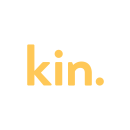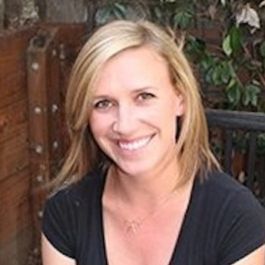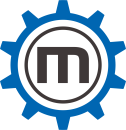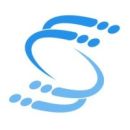For all of its advantages, remote work has a knack for leaving employees lost at sea.
The luxury of working on tasks without interruption can quickly prove isolating, with few lifelines available compared to the stability of a physical office. While productivity has generally improved — or at least been maintained — since the start of the pandemic, employees are still adjusting to the extended moments of solitude that define working in a virtual space.
Remote-first organizations are making adjustments as well, particularly when hiring and onboarding new employees. Expanding open positions to remote workers offers a larger talent pool to choose from, but it comes with an added set of challenges, particularly implementing processes that support new hires without face-to-face interaction.
“Regardless of location, we onboard all new hires in cohorts on a specific day to help them build a sense of community early,” said Caitlyn Metteer, director of recruiting at recruiting software firm Lever — a company that understands the importance of providing a first-class experience in the talent acquisition space.
In addition to going through orientation and setting up their tech together in a cohort, new hires are also assigned a “buddy” on their specific team so they have someone to reach out to while absorbing information and learning the intricacies of their position.
“By attending these sessions, new employees are able to understand more than just their role and how to navigate Lever,” Metteer continued. “They also receive the historical context of the company to set them up for success.”
Communicating through screens might not be ideal when fostering a sense of community, but there are still ways to facilitate connectedness and inclusivity when team members are scattered across the country. To learn how, Built In Chicago connected with six local tech professionals to find out the methods they use to ensure their new hires feel supported, and how their remote-work culture overcomes the challenges of keeping distributed teams engaged.
Open positions: Fintech company Kin Insurance is hiring for technology (engineering, product, QA, design), insurance (claims, underwriting, insurance product), data and analytics, operations (sales, customer support) and marketing. The team is committed to hiring the best candidate for the job, regardless of location.
What did you change about the hiring process to better accommodate remote applicants?
Apart from an entirely virtual interview process, we have also gotten more flexible in how we structure interviews. Some candidates prefer to conduct interviews over multiple days to ensure they have time to prepare and digest every individual interview. Other candidates prefer to block their interviews together to streamline as much as possible. We are an adaptable and efficient remote work environment, and we want our interview process to reflect that.
We have also leaned into evaluating candidates for their alignment with Kin’s core values, which are empathy, a solutions-oriented approach and calmness under pressure. In a remote setting, finding candidates who embody these traits is even more important to ensure we hire people who will make Kin a better place.
We are an adaptable and efficient remote work environment, and we want our interview process to reflect that.”
How has the onboarding process shifted to ensure off-site employees feel welcomed and engaged?
It all starts with ensuring that new hires have the information and tools they need to feel comfortable on their first day, so we make sure all employees receive hardware and systems access in advance of their start date. The first meeting is always with our amazing IT team to make sure new hires have the access they need to connect with their coworkers.
We also have a dedicated onboarding specialist who is there to make sure all new hires receive a first-class onboarding experience. This role prepares new hires for the first day and is ready to step in should any questions or concerns come up.

Open positions: Recruiting software company Lever is hiring for product, engineering, customer success and sales, with 100 percent of its open positions available to remote workers.
What did you change about the hiring process to better accommodate remote applicants?
Something we’ve done to better accommodate remote applicants is offering flexible scheduling options during the hiring process. This helps candidates, because it doesn’t distract them from their current role or responsibilities to take an interview. They can do it at a more convenient time.
Additionally, all of our interviews, regardless of location, are remote. No candidate has an advantage over the other because they’re in-person, and being remote provides more flexibility for the time of the interview instead of having to make arrangements to come to the office.
We lead our recruiting process with empathy. We understand and respect that everyone has a different work setup and has accommodations specific to their needs, and we want to meet those expectations to ensure a smooth hiring process for all.
No candidate has an advantage over the other because they’re in-person.”

Open positions: Machinio, a global search engine for finding used machinery and equipment, is hiring for its sales and renewals teams in the United States, Canada and Europe, with 100 percent of its open positions available to remote workers.
What did you change about the hiring process to better accommodate remote applicants?
We have an efficient hiring process that makes the experience no different than if a candidate was interviewing in-person. Our entire process happens via phone and Google Meet, and it’s designed to provide the candidate with as much knowledge and transparency about the company as possible. We aim to respect everyone’s time and act as efficient decision makers. Our interview process takes two weeks, and we do not waste time. Everyone involved in the interview process are real employees with long tenures and institutional knowledge, and we work with and manage the jobs and teams for which candidates are interviewing. If we want to be transparent and maintain the standards of our team — or raise the bar even higher — we understand that investing time in presenting our company and choosing the people to join our teams is a must.
And it’s designed to provide the candidate with as much knowledge and transparency about the company as possible.”
How has the onboarding process shifted to ensure off-site employees feel welcomed and engaged?
Our onboarding process includes providing new hires with everything they need for their first week a few days ahead of time. This includes work equipment, onboarding documentation, accounts, a mentor and every resource they might need. Additionally, on day one, we set up what we call 15-minute “meet-and-greets,” which consist of individual meetings with every single team member, regardless of the team. Our new hires have the opportunity to chat and meet with every team member right off the bat so they feel included and acquainted with everyone right away.

Open positions: Edtech company Black Spectacles is hiring for its learning and product and engineering teams, as well as its people team and a CFO, with 100 percent of its open positions available to remote workers.
What did you change about the hiring process to better accommodate remote applicants?
Like many organizations, Black Spectacles went remote in 2020 in response to the pandemic. Now, as a fully remote company, we’re able to attract and recruit talent on a nationwide scale, which has really opened up our candidate pool and allowed us to get in front of top talent across the county that we wouldn’t have been able to prior to going remote. It was a huge shift, but we’ve been able to find great success in this fully-remote approach.
Part of this shift was adjusting our hiring process. We have a pretty thorough hiring process, so we had to adapt it to meet the needs of remote applicants, as well as the business. We made sure that all of our interviews were able to be completed remotely through Google Meet, which allowed us to accommodate the needs of our remote applicants.
As a fully remote company, we’re able to attract and recruit talent on a nationwide scale.”
How has the onboarding process shifted to ensure off-site employees feel welcomed and engaged?
In addition to our thorough interview process, we also have a robust onboarding process that is aimed at bringing people into the organization and getting them acclimated and feeling welcomed immediately. When we were in the office, we would host lunches, have numerous in-person meetings and walk-and-talks, as well as other interactions that would make new hires feel welcome. The best part is that we still do all of this! It’s just from the comfort of our own homes.
Prior to new hires starting, our team sends out a welcome video from everyone in the company that’s specific to the new team member, just to say hi and introduce ourselves. Once they have started, we schedule virtual onboarding training sessions with every team, virtual lunches with the new hire and their team, bi-weekly lunch icebreaker hours and happy hours, weekly team meetings, and other initiatives that are all geared to breaking down the computer screens and making everyone feel engaged and excited to work here.
What used to be a totally in-person process of welcoming new members to our team has been adapted out of necessity and now allows us to welcome members from across the country in the same manner while being just as effective.

Open positions: Social media company Sprout Social is hiring for its engineering and sales teams, with 97 percent of its open positions available to remote workers.
What did you change about the hiring process to better accommodate remote applicants?
We adapted our interview process to provide options that span across multiple days and introduced “batch days” to help streamline the hiring and decision-making process. These adjustments have led to better candidate experiences, reduced our overall time to hire and helped us prioritize specific identity groups where we have underrepresentation. We’ve also implemented the use of GoodTime, which empowers candidates to view availability on our team’s schedule and select the days and times that work best for them. This tool has been instrumental in eliminating confusion that may come with remote interviewing and coordinating between different time zones. GoodTime automatically syncs with all parties’ calendars so that everyone is in the right place at the right time.
For technical roles, we introduced the use of HackerRank, which is an all-in-one whiteboarding and video conferencing platform that allows developers to write code, test and debug remotely. This solution has led to a more conducive experience for candidates and helps us fully assess technical capabilities.
From the moment someone accepts an offer, we keep in regular contact with them to ensure they feel prepared and comfortable for their first day of onboarding.”
How has the onboarding process shifted to ensure off-site employees feel welcomed and engaged?
Starting a new role is an exciting milestone, and our value of open and authentic communication has been critical in keeping new hires engaged and connected to our culture. From the moment someone accepts an offer, we keep in regular contact with them to ensure they feel prepared and comfortable for their first day of onboarding. We’ve also expanded our onboarding process to touch on key aspects of our company, such as our culture, how we work and the Sprout product, as well as included touchpoints with our executive team to allow new hires to hear about Sprout from the lens of our most senior leaders.
In our first session with new hires, we acknowledge the difficulty of remote onboarding and encourage meaningful activity in our cohort Slack channels. Whether it’s sharing fun facts about yourself or meeting new team members through Donut-enabled meetups, empathy and open communication is what keeps our team in lockstep with one another.
Open positions: Fintech software company Silverwork Solutions is hiring for software engineers, with the majority of its open positions available to remote workers.
Which teams are expanding the most at Silverwork Solutions? What proportion of your open positions are available to remote workers?
As a fintech software company, we are always on the lookout for software engineers at all levels, ranging from entry-level college grads to devs with 10 or more years of experience. We’ve been remote since March 2020 and seem to be as productive as ever. We’ve even made a couple of major organizational level reorganizations to help us adapt. That’s why the majority of our open positions are open to remote workers, even though we’re based in Chicago.
With the current job market, it’s important to make the application process as efficient as possible.”
What did you change about the hiring process to better accommodate remote applicants?
We all know that the candidate experience is key to a future employee’s success, and even more so with remote hiring. With the current job market, it’s important to make the application process as efficient as possible. I personally understand the frustration of having to enter redundant information that could be found on my already-uploaded resume. No one has time for that! So I removed that step and kept our applications simple.
I also updated our job listings so the most important information is at the top and tried to keep it interesting. There’s nothing worse than having to squint through massive blocks of text, especially when applying to multiple jobs a day.
Looking inward is important too, so we streamlined our internal process, including implementing a team-based applicant tracking system that allows hiring managers and interviewers to take part in the hiring workflow. This system also allows us to optimize the interviewing and evaluation aspects of hiring. The most important thing we added has to be the scorecard based on our core values.
How has the onboarding process shifted to ensure offsite employees feel welcomed and engaged?
I’ll admit that remote onboarding is one of the toughest adjustments we’re making, and we’re still trying to get it right. Each new candidate receives a welcome package mailed to their house with fun company swag. All paperwork is completed digitally through our human resources information system, and we are currently evolving our training and orientation schedules and communication. We also go out of our way to welcome team members through Slack channels and have them join various meetings. And of course, we’re always checking in with our new hires to make sure they’re comfortable and ask them for any feedback about how we can make our process better and start their experience the best way possible.



















